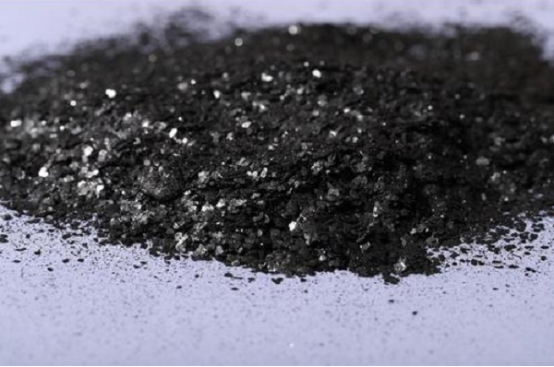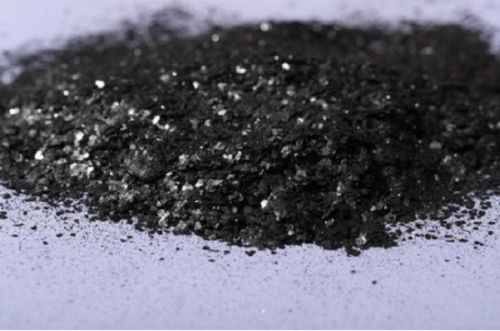Graphite is one of the minerals crystallized by elemental carbon. It has excellent properties such as light weight, high temperature resistance, thermal conductivity, electrical conductivity, lubrication, plasticity and good chemical stability. It is widely used in aerospace, new energy, medicine, information technology, and top equipment manufacturing. Emerging industries such as environmental protection, energy conservation and environmental protection, nuclear industry, and new materials will become important strategic resources to support future high-tech development.
Graphite includes natural graphite materials and artificial graphite materials. Among them, natural graphite mainly exists in associated graphite deposits, and has huge reserves in the earth’s mineral resources. Although the reserves and output of natural graphite deposits in my country rank first in the world, natural graphite is not available. Renewable mineral resources, and natural graphite mainly exists in associated graphite deposits, which need to be produced through mining, mineral separation, purification, shaping and grading, etc. It is greatly affected by natural mineral deposits, and is subject to cost control and product quality. Greater impact. Therefore, low-cost, high-performance artificial graphite is a new source of graphite anode materials for lithium batteries.
Artificial graphite In a broad sense, all graphite materials obtained through organic carbonization and high-temperature graphitization can be called artificial graphite, such as carbon fiber, pyrolytic carbon, and foamed graphite.
In a narrow sense, it usually refers to the block solid material produced by the process of orthopedics, kneading, molding, carbonization and graphitization from carbonaceous raw materials with impurity content, such as graphite electrodes and isostatic graphite.
The basic process flow of artificial graphite is the same, but there will be some differences in the specific preparation process of each enterprise. The steps we listed include raw coke, crushing, crushing, shaping, jet milling, granulation, Screening, demagnetization, carbonization, graphitization, sieving, demagnetization, inspection and weighing, packaging and storage, all operations are delicate and complicated.
(1) Pre-processing (crushing, crushing, shaping, airflow milling)
There are many ways to manufacture artificial graphite, and the common one is: add pitch to the main raw material (powdered calcined petroleum coke) as a binder, and then add the rest of the auxiliary materials according to the needs.
The products after proportioning need to be crushed and crushed, and the products that come out after that need to be dedusted, the dust collection rate is about 80%, the exhaust gas is filtered by the filter element and then discharged, and the dedusting efficiency is greater than 99%. The filter element is made of filter cloth with pores less than 0.2 microns, which can intercept all dust above 0.2 microns, and the fan controls the entire system to be in a negative pressure state.
(2) Mid-term treatment (granulation, reactor, sieving, demagnetization)
The following processes are granulation, shaping, reactor, sieving, and demagnetization. Among them, the granulation will have a pyrolysis process and a ball mill screening process.
In the pyrolysis process, the intermediate material 1 is put into the reactor, and the air in the reactor is replaced with N2. The reactor is sealed. Under the pressure of 2.5Kg, it is heated according to the temperature curve and stirred at 200~300°C for 1 -3h, then continue to heat to 400-500°C, stir to obtain a material with a particle size of 10-20mm, cool down and discharge, that is, the intermediate material 2. The volatile gas in the reaction kettle is drawn out by the fan, condensed by the condensation tank, and the liquid is condensed in the form of tar, and the gaseous waste gas is drawn out by the fan, filtered by activated carbon and then emptied.
(3) Post-processing (carbonization and graphitization)
Carbonization and graphitization are an indispensable part. We need to use CX-CF series carbonization furnaces to carbonize materials at medium and low temperatures. The temperature of the carbonization furnace can reach 1600 degrees Celsius, which can meet the needs of carbonization. High-precision intelligent temperature controller and automatic PLC The monitoring system will allow accurate control of the data generated during the carbonization process.
(4) Ball milling and screening (screening, demagnetization, inspection and weighing, packaging and storage)
The graphitized material is transported to the ball mill by vacuum for physical mixing and ball milling, and is sieved with a 270-mesh molecular sieve. The sieve material is further ball milled to meet the particle size requirement and then sieved.
The prepared artificial graphite will be used in the metallurgical industry, mechanical industry, and chemical industry. Its thermal conductivity and corrosion resistance will be higher than those of natural graphite and polymer resin composite materials.


